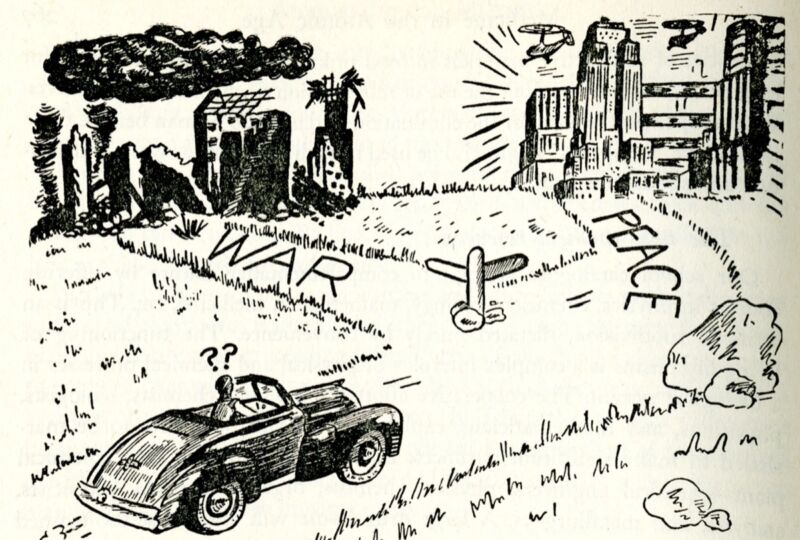Teenage Maurice Sendak illustrated his teacher’s 1947 pop-sci book

Enlarge / A young Maurice Sendak’s illustration of two possible outcomes of atomic power for the 1947 pop-sci book Atomics for the Millions. (credit: McGraw Hill/Public domain)
Beloved American children's author and illustrator Maurice Sendak probably needs no introduction. His 1963 book, Where the Wild Things Are, is an all-time classic in the picture genre that has delighted generations of kids. It has sold over 19 million copies worldwide, won countless awards, and inspired a children's opera and a critically acclaimed 2009 feature film adaptation, as well as being spoofed on an episode of The Simpsons.
But one might be surprised to learn (as we were) that a teenage Sendak published his first professional illustrations in a 1947 popular science book about nuclear physics, co-authored by his high school physics teacher: Atomics for the Millions. Science historian Ryan Dahn came across a copy in the Niels Bohr Library & Archives at the American Institute of Physics in College Park, Maryland, and wrote a short online article about the book for Physics Today, complete with scans of Sendak's most striking illustrations.
Born in Brooklyn to Polish-Jewish parents, Sendak acknowledged that his childhood had been a sad one, overshadowed by losing many extended family members during the Holocaust. That, combined with health issues that confined him to his bed, compelled the young Sendak to find solace in books. When Sendak was 12, he watched Walt Disney's Fantasia, which inspired him to become an illustrator.
